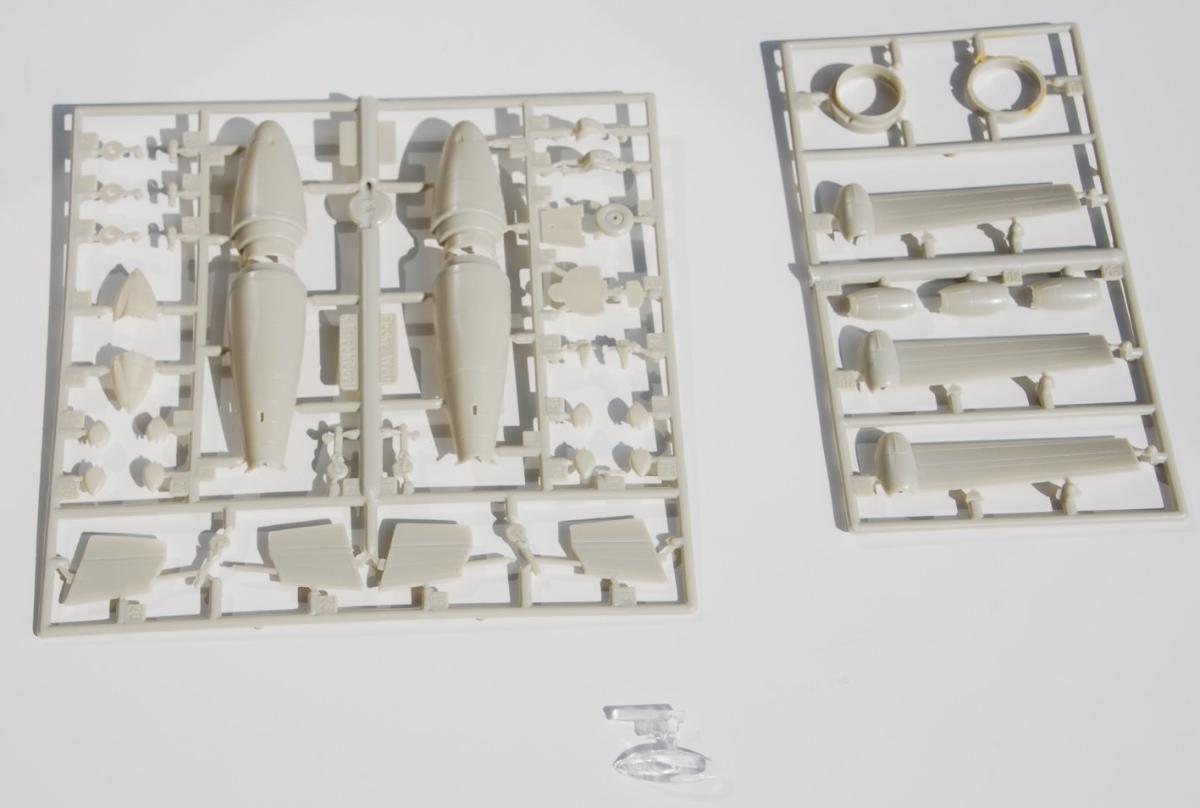Manufacturer: Huma
Scale: 1/72
Additional parts: none
Model build:

Manufacturer: Huma
Scale: 1/72
Additional parts: none
Model build:
The biting wind whipped across the desolate airstrip, whipping sand against Heinrich's goggles as he squinted towards the flickering hangar doors. Inside, shrouded in secrecy, lay the culmination of years of stolen moments and whispered conversations - the Triebflügel.
Heinrich wasn't a soldier by choice. Drafted at the tail end of the war, he'd stumbled upon a hidden project within the bowels of the Luftwaffe - a team of engineers defying the inevitable defeat by crafting a vertical take-off and landing (VTOL) fighter. The Focke-Wulf Triebflügel, a name that tasted like defiance on his tongue, was a marvel of cobbled-together brilliance and stolen resources.
The hangar doors groaned open, revealing a sight that stole Heinrich's breath. Unlike anything he'd ever seen, the vehicle in front of him pulsed with a strange, almost organic energy.
"Ready for a history lesson, Herr Hauptmann?" rasped Werner, the wiry chief engineer, a cigarette dangling precariously from his lips.
Hesitantly, Heinrich climbed into the cramped cockpit, a dizzying array of dials and levers replacing the familiar instruments of a Messerschmitt. Werner explained the ballet of the takeoff - the jolt of the initial rockets spinning the wings to ignite the ramjets, the agonizing wait for enough thrust before the Triebflügel clawed its way skyward.
The first test flight was a baptism by fire. The rockets roared, the ground lurched beneath them, and for a terrifying moment, Heinrich thought they were doomed. Then, a surge of power, a deafening roar, and the Triebflügel lurched skyward, a ungainly metal bird defying gravity.
The world tilted on its axis as Heinrich fought to control the bucking craft. Below, the scars of war stretched out endlessly - a testament to the futility of the conflict they were trying to outrun.
The Triebflügel wasn't perfect. It vibrated with a life of its own, the ramjets thirsty for fuel. But as Heinrich banked over the ruined landscape, a sliver of hope pierced the fog of defeat. This wasn't just a plane. It was a symbol of resilience, a whisper of defiance against the crushing weight of the world.
News of the Triebflügel project was a closely guarded secret, a lifeline they clung to in the face of impending surrender. They hoped, against all odds, to use it to bargain for a better peace, to carve out a future where Germany could rebuild, not from the ashes of defeat, but from the embers of innovation.
The final test wasn't a flight, but a desperate gamble. With the Soviets closing in, they had to take the Triebflügel on a daring escape mission, a one-way ticket to a hidden airstrip in neutral Switzerland. The success of the mission, the fate of the project, rested on Heinrich's calloused hands and his untamed Triebflügel.

Overview
The Focke-Wulf Triebflügel (“thrust-wing”) was a radical late-war German interceptor concept combining vertical takeoff and landing (VTOL) with ramjet-powered rotating wings. Designed to defend cities without needing vulnerable airfields, it became one of the most unusual weapons projects of 1944–45.
Conceived to counter Allied bombing and airfield destruction, the aircraft stood vertically on its tail for launch. Three wings with ramjets rotated around the fuselage, acting as both propeller and lift surface. Solid-fuel rockets spun the rotor to ramjet ignition speed.
The first prototype (V1) began ground tests in early 1945, followed by V2, which achieved brief vertical hops. Extreme vibration, rotor instability and difficulty during transitions from vertical to horizontal flight plagued development. Still, a small test unit was established near Bremen for emergency deployment.
In April 1945, the Triebflügel was trialed as a point-defense system. Launch from small forest clearings took only minutes, and once airborne it could rapidly climb and outrun piston fighters. However:
Fuel endurance was less than 30 minutes.
Vibrations threatened to tear the aircraft apart.
Landings were extremely hazardous.
Pilots faced immense workload and poor forward visibility.
In one test on 6 July 1945, a prototype intercepted an Allied bomber near Bremen and reportedly damaged it before crashing during landing due to rotor failure.
All surviving prototypes and documents were captured by Allied forces. Although the design never reached operational service, it heavily influenced early Cold War research into VTOL, ramjets and rotor dynamics in the U.S., U.K. and France.
The model shows a FW Triebflügel preparing for take-off in 1946.

The is a 1/72 scale Huma kit, the only one I know of this aircraft. The kit was quite simple but it did fit ok, only the landing gear weas a bit fragine to build. Build OOB it is airbrushed with Revell Aqua Color, sone addtional decals were added fomr the spare part box.